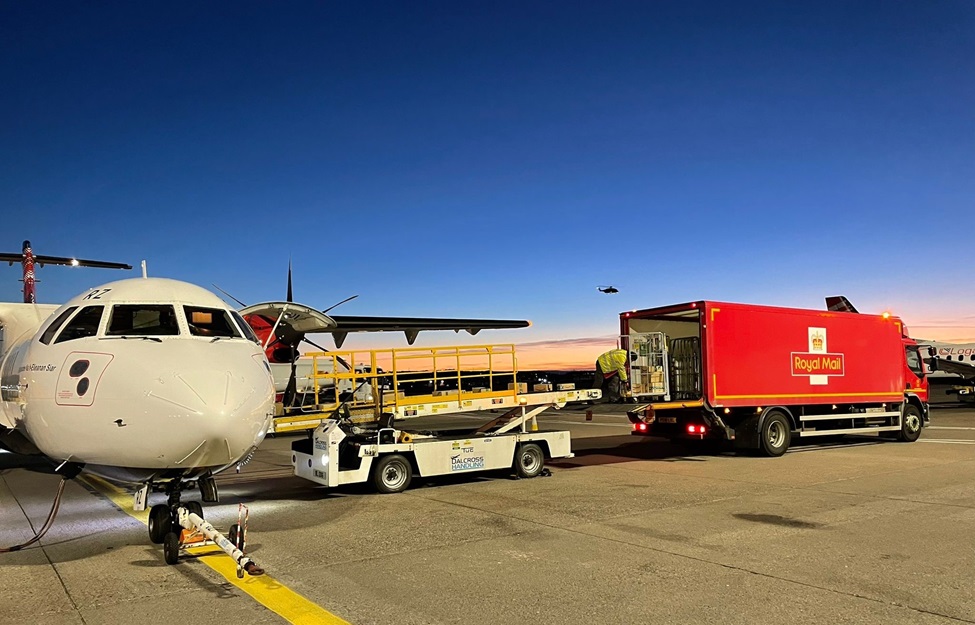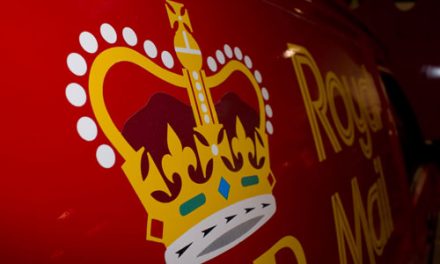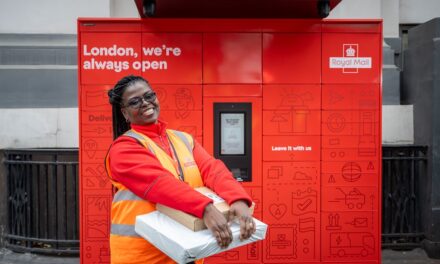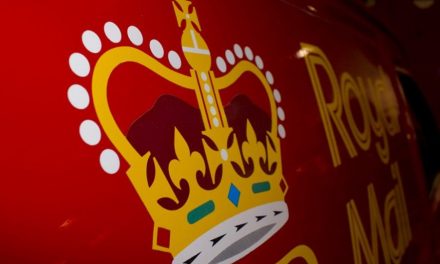
Royal Mail makes its “biggest step yet” in reducing its use of air to transport mail

Royal Mail is cutting the number of domestic flights it operates in half as the company reduces its use of planes as part of its efforts to improve reliability for customers and minimise carbon emissions.
As well as saving c.30,000 tonnes of carbon dioxide equivalent per year, transporting more mail by road instead of air will improve reliability for customers and help meet growing demand for next day deliveries, as road vehicles are less likely to be delayed by bad weather and road fleets are less capacity-constrained, enabling Royal Mail to transport more during busy periods.
A total of 18 domestic flights are being discontinued. The removal of these flights is a significant step yet for Royal Mail towards achieving its target of being Net-Zero by 2040, and part of the company’s wider modernisation and transformation programme.
The first wave of 11 flights made their final journeys in June, with an additional three flights stopping on July 20 and a further four early next year. The only domestic flights that will remain are those that are essential for Royal Mail to fulfil its Universal Service Obligation to provide a next day delivery service to all 32 million addresses in the UK.
The capability to divert mail from air to road has been unlocked by changes Royal Mail has made to its operation, including later start times at delivery offices across the country, making it possible to accommodate longer journey times.
Alistair Cochrane, Chief Operating Officer at Royal Mail, said: “The removal of half of our domestic flights is our biggest step yet in reducing our use of air to transport mail and a major step towards our Net-Zero by 2040 target. Not only will this reduce carbon emissions, transporting more mail by road will also help us provide a more reliable service for customers and increase our capacity to meet the increasing demand for next day parcel deliveries.
“Moving letters and parcel by air has played a significant role in Royal Mail’s history, enabling us to fulfil our commitment to provide a next day delivery service to every address in the UK. However, we are continually modernising and these changes to our network mean that we can reduce our reliance on air which is good for our customers and the environment.”
Environmental benefits
Royal Mail has pledged to reduce its Scope 3 carbon emissions by 25 per cent by 2030 as part of its commitment to reach Net-Zero by 2040. The discontinuation of 18 domestic flights is the most significant step yet in achieving this goal, projected to contribute a 4% reduction in total Scope 3 emissions based on a 2020-21 baseline.
Royal Mail’s fleet of heavy goods vehicles (HGVs), which are used to transport mail across the country, is partly run on hydrotreated vegetable oil (HVO), a renewable alternative to diesel that reduces up to 90 per cent of direct greenhouse gas emissions compared to diesel.
The company’s red vans are also the UK’s largest electric vehicle (EV) delivery fleet, with c.5,000 rolled out.
Customer benefits
As well as reducing carbon emissions, mail transported by road is less likely to be delayed due to weather compared to air, leading to increased reliability for customers.
Road transport will also help meet the demands of growing online shopping habits, with increased capacity for larger parcel sizes. In the last six years alone, the average size of a parcel handled by Royal Mail has grown by nearly 30% and the number of parcels classed as ‘large parcels’ (bigger than shoebox size) has more than doubled.












